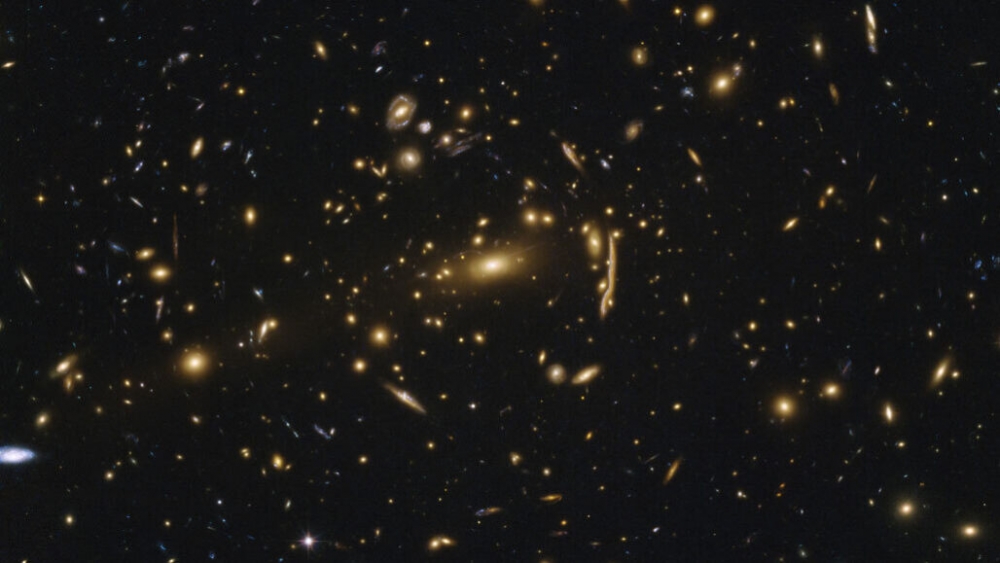Dark matter clumps in galaxy clusters bend light surprisingly well

Observations of 11 galaxy clusters, such as MACSJ1206.2-0847 (shown), reveal that some globs of dark matter in these clusters are denser than expected. HUBBLE/ESA AND NASA
Not only is the mysterious substance invisible, but it’s also not all where we thought it was
By Maria Temming September 10, 2020
Dark matter just got even more puzzling.
This unidentified stuff, which makes up most of the mass in the cosmos, is invisible but detectable by the way it gravitationally tugs on objects like stars. (SN: 11/25/19). Dark matter’s gravity can also bend light traveling from distant galaxies to Earth — but now some of this mysterious substance appears to be bending light more than it’s supposed to. A surprising number of dark matter clumps in distant clusters of galaxies severely warp background light from other objects, researchers report in the Sept. 11 Science.
This finding suggests that these clumps of dark matter, in which individual galaxies are embedded, are denser than expected. And that could mean one of two things: Either the computer simulations that researchers use to predict galaxy cluster behavior are wrong, or cosmologists’ understanding of dark matter is.
See full text